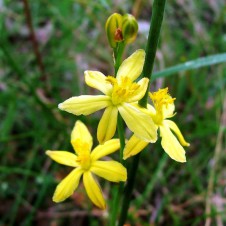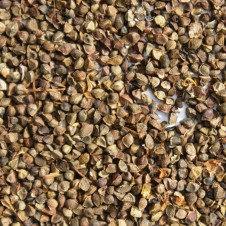General Description: A tufted, perennial herb, to 50 cm tall, with narrow, grass-like hollow leaves, and yellow star-like flowers, clustered on leafless flowering stems.
Flowers and Fruit: Yellow, star-shaped flowers, to 35 mm wide from September to February. Fruit is a round, 7 mm wide, capsule, containing small, black seeds.
Site Preference and Tolerances: A wide range of woodlands and forests in lowland sites. Widespread in plains grassland, red gum woodland, dry and valley forests
Life Span: Plants die back to a bulbous tuberous rootstock in dry weather, but may continue to produce new leaves and flower throughout the year with additional watering during summer and autumn. In ideal conditions they will readily regenerate and naturally develop into attractive informal drifts.
Wildlife Value: Provides nectar for insects.
Other Values and Uses: Tubers were traditionally steamed and eaten by Aboriginal people. The corms are best roasted and can be eaten all year round, although it will take a few years initially for the corm to mature. Roots of B. bulbosa are regarded as the sweetest of the lily and lily – like plants. They are also nutritious, containing calcium and iron.
Other Scientific Names: Anthericum bulbosum, Bulbine australis, Bulbinopsis bulbosa
Other Common Names: Yellow Bulbine-lily, Golden Lily, Wild Onion, Native Leek, Pike (Koorie name), Native Onion
Germination Information: Sow seed in autumn and should have good results in one to two months. Light may give increased germination so only cover lightly with soil.


